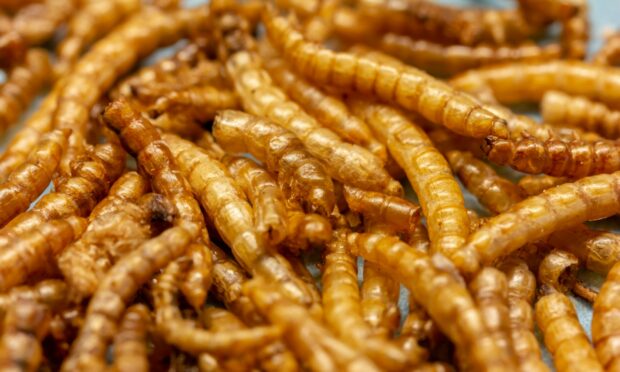The potential inclusion of edible insects in animal feed is at the heart of new Scottish research, designed to create a development and use roadmap for insect farmers, feed business operators and policymakers.
Centred on Scotland’s Rural College (SRUC), the new research is being backed by a £10,700 grant from SEFARI Gateway, a consortium comprising six research institutes, including the James Hutton Institute, Dundee.
In addition to leading the animal feed project, SRUC researcher Dr Pattanapong Tiwasing has called for the UK’s Food Standards Agency and Food Standards Scotland to urgently introduce a new “Great Britain-specific transitional measure” to enable the edible insect sector to survive in the UK.
“The European Commission approved the sale of whole insects and their ingredients, subject to specific authorisations, in 2018,” said SRUC.
“However, following Brexit, this does not apply in the UK where edible insects are not regulated or approved for sale.”
Benefits of insect feed
As a result, while edible insects have featured in Asian, African and South American diets for centuries, they have, until recently, been seen as a novelty food in Western countries, often being linked to extreme eating challenges on television shows such as I’m a Celebrity – Get Me Out of Here!
“The introduction of new and developing EU regulations relating to edible insect products have muddied the waters, leading to confusing procedures for those looking to trade and export edible insects,” said Dr Tiwasing, who is originally from Thailand where “eating insects as a snack is commonplace”.
“This has been particularly impactful following the UK’s exit from the EU because it means there are currently no regulations for the edible insect (for human consumption) industry, and it is therefore illegal to sell insects for human consumption in the UK.
“Policymakers need to take urgent action in order for the insect sector industry to survive in Europe and the UK.”
With edible insects being hailed as a sustainable source of high protein food, researchers at @RuralPolicySRUC have received an Innovative Knowledge Exchange award of over £10k, funded by @SEFARIscot, to develop a strategy for using them in animal feed. https://t.co/EllW77RdIe pic.twitter.com/8d1IKxtC0O
— SRUC (@SRUC) December 6, 2022
Asked for a comment on the new research, David McClelland, technical director of Norvite Animal Nutrition, Aberdeenshire, said that previous research had focused on the nutritional quality of insect larvae in animal feed, most likely to be applied in the poultry and farmed fish sectors.
“The greatest benefit,” he said, “is that insect protein may be produced locally, which benefits the environment and has very good sustainability credentials.
“The clearest barrier, meanwhile, is whether consumers will accept the concept.
“The food chain, including farmers and feed producers, is very proud of the high-quality food produced in Scotland. While new technologies like this are to be welcomed, therefore, they must also be socially acceptable.”

Conversation